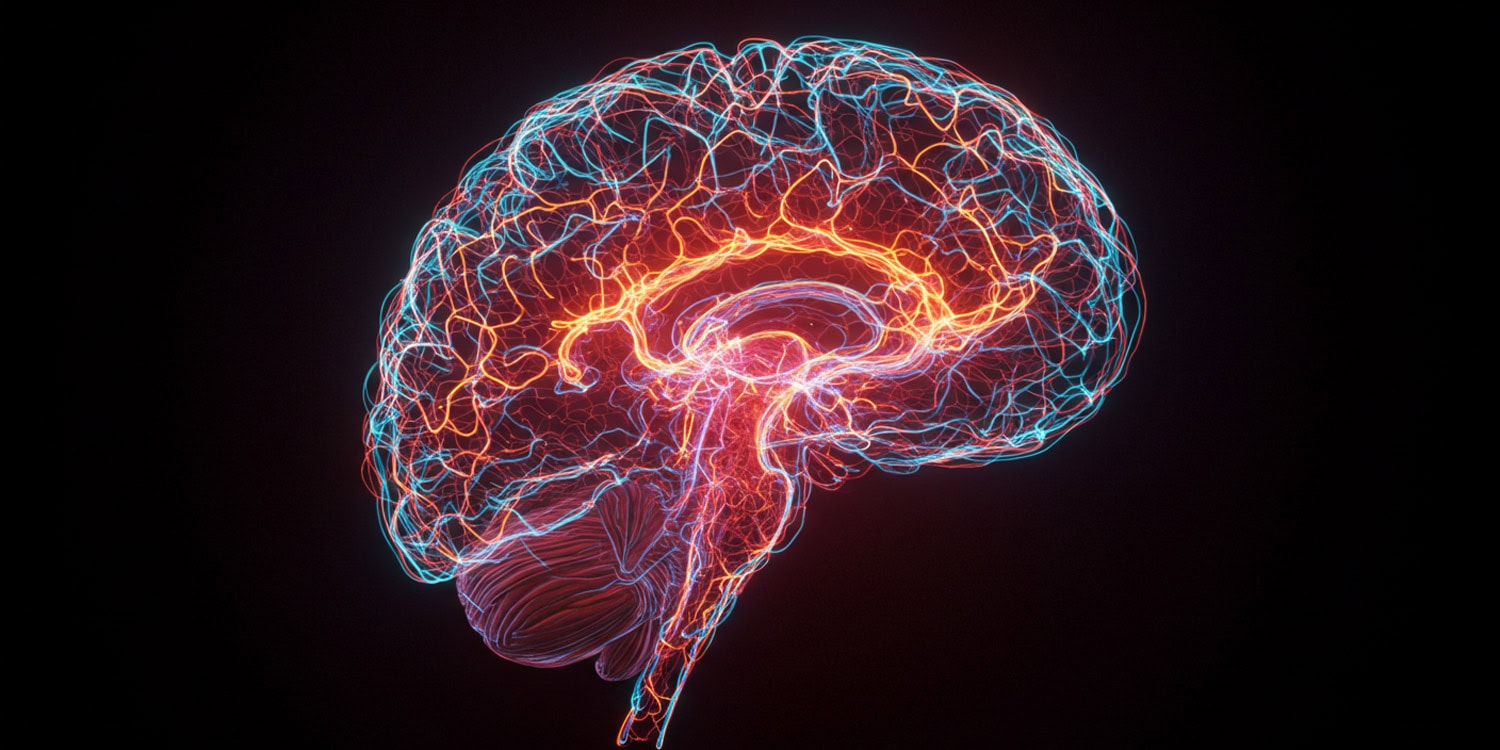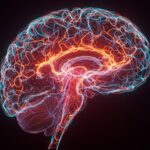A new study using brain imaging technology has shed light on how anxiety might change the way young people process emotions. Researchers discovered that children and teenagers with higher levels of generalized anxiety symptoms displayed a distinct pattern of brain activity when watching emotionally negative scenes from a movie. This pattern suggests that anxious youth may become more deeply engrossed in negative emotions when faced with upsetting situations. The findings were published in JAMA Psychiatry.
Generalized anxiety disorder is a common mental health condition, particularly among children and adolescents. It is characterized by excessive and persistent worry about various aspects of life, such as school, social situations, and future events. Experts have long known that generalized anxiety is linked to difficulties in processing emotions. Individuals with this condition often struggle to manage negative feelings and may be overly sensitive to negative cues in their environment. However, the precise brain mechanisms behind these emotional processing differences in anxious youth have remained unclear.
Previous studies attempting to understand the brain basis of anxiety have often relied on simple, artificial stimuli, like static images of faces displaying different emotions. While these studies have provided some insights, they may not fully capture how people process emotions in real-world situations, which are typically more complex and dynamic. Our everyday experiences involve a constant stream of social and emotional information, often unfolding over time, such as when watching a movie or interacting with others.
To address this limitation, the researchers in the current study chose to use a more realistic approach by examining brain activity while young people watched a movie clip designed to evoke a range of emotions. By understanding how brain activity changes during this type of natural emotional processing, the researchers hoped to gain a more accurate picture of the brain differences associated with anxiety and potentially identify new avenues for developing more effective treatments.
To conduct their investigation, the researchers recruited a large group of 620 young people between the ages of 5 and 15. These participants were part of a larger ongoing research project studying brain development in youth facing challenges in school. All participants underwent brain scanning using a technique called functional magnetic resonance imaging, or fMRI. This technology allows scientists to measure brain activity by detecting changes in blood flow.
While in the scanner, the young participants watched a ten-minute segment from the animated movie “Despicable Me.” This particular movie clip was chosen because it contains a mix of scenes designed to elicit different emotions, including both positive and negative feelings. The clip included scenes of a bedtime story, a tea party, moments where children are taken away by social services, humorous side stories, and a scene where the main character abandons the children to commit a crime.
Before the brain scans, the researchers also assessed the anxiety levels of the participants using a questionnaire called the Screen for Child Anxiety Related Disorders. This questionnaire asks young people to report on their own anxiety symptoms. Using self-reports allowed the researchers to directly capture each child’s individual experience of anxiety.
After collecting the brain scan data, the researchers used a sophisticated data analysis technique called hidden Markov modeling. This method is like searching for hidden patterns within complex data. In this case, it allowed the researchers to identify distinct “brain states” that occurred as the young people watched the movie. Think of these brain states as different modes of brain activity that the participants cycled through as the movie unfolded.
The researchers also analyzed the movie clip itself, frame by frame, noting the emotional content, including how positive or negative the scenes were, as well as other visual and auditory features like brightness, motion, and loudness. This detailed analysis of the movie content allowed them to link specific brain states to particular types of scenes.
The analysis revealed that the young people cycled through three primary brain states while watching the movie. The first state was characterized by high activity in brain regions associated with visual processing and movement, but lower activity in areas linked to attention and emotional processing. This state seemed to be associated with movie scenes that were brighter, louder, and less emotionally charged.
The second brain state showed high activity in auditory and motor areas, but again, lower activity in emotion-related regions. This state appeared to be linked to scenes that were louder, less negative, contained more visual motion, and less focused on faces or bodies.
The third brain state was different. It showed high activity in brain regions involved in attention and emotional processing, but lower activity in visual and auditory areas. This state was more likely to occur during movie scenes that were emotionally negative, quieter, and had less visual motion.
Most importantly, the researchers found a significant link between generalized anxiety symptoms and brain state three. Young people who reported higher levels of generalized anxiety symptoms spent more time in this third brain state, particularly when watching emotionally negative parts of the movie. This suggests that when confronted with negative emotional content, anxious youth may be more inclined to engage a brain state associated with deeper emotional processing and attention to internal thoughts and feelings, potentially becoming more immersed in the negativity.
Interestingly, these anxious youth also spent less time in brain state two during negative scenes. Furthermore, the researchers observed that young people with higher anxiety symptoms had more frequent shifts between brain state one (the state associated with less emotional processing) and brain state three (the state associated with higher emotional processing). This might indicate a greater reactivity to emotional changes in the movie for anxious youth. These patterns were specifically linked to generalized anxiety and were not found in relation to social anxiety symptoms, suggesting that these brain activity patterns are particularly relevant to the type of excessive worry that defines generalized anxiety.
Looking ahead, this research opens new directions for understanding and treating anxiety in young people. The finding that anxious youth tend to get “stuck” in a brain state associated with heightened emotional processing during negative situations suggests potential targets for interventions. For example, therapies aimed at helping anxious youth shift out of this state, perhaps by training them to redirect their attention or strengthen their ability to control their focus, could be beneficial.
The ability to identify these brain states in real-time could potentially lead to innovative interventions using techniques like brain stimulation to help young people regulate their emotional responses as they happen. Further studies are needed to explore these possibilities and to fully understand how brain activation states can be used to improve the lives of children and teenagers struggling with anxiety.
The study, “Youth Generalized Anxiety and Brain Activation States During Socioemotional Processing,” was authored by M. Catalina Camacho, Rebecca F. Schwarzlose, Michael T. Perino, Alyssa K. Labonte, Sanju Koirala, Deanna M. Barch, and Chad M. Sylvester.




